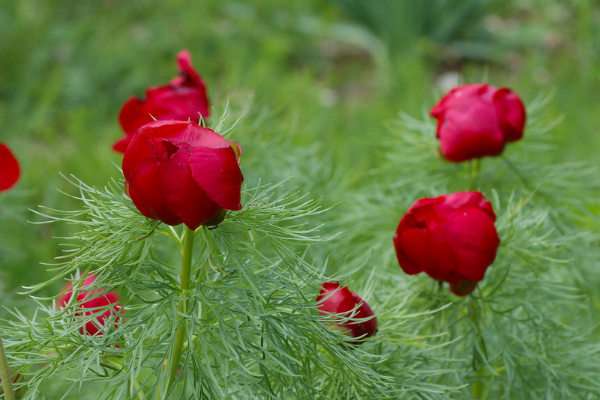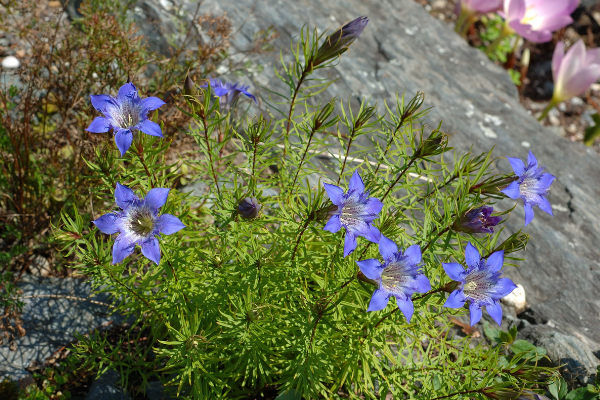Alpine plants
Germany has more than 90 public botanical gardens and almost every one of them has a more or less large rock garden. The reason: mountain plants are usually small, their flowers often large. A rich collection of attractive plants can thus be accommodated in a small area.
At the Munich-Nymphenburg Botanical Garden, the collection of alpine plants is unique in its scope and quality. Various culture conditions, high horticultural standards, regular collecting activities at natural sites and worldwide networking with partner institutions are the prerequisites for the long-term preservation of a collection of more than 3,000 species from the most diverse mountain regions of the world.
History: Origin of the Alpine Garden, Alpinum and Alpine House
It is thanks in particular to Karl von Goebel – garden director from 1891 to 1931 – that alpine plants developed into one of the most important focal points of the collection at the Botanical Garden in Munich. Already as director of the Old Botanical Garden, Goebel was fascinated by the alpine flora, but realized that the Munich climate set certain limits to the cultivation of these plants. Therefore, he made an early effort to establish a satellite garden in the high altitudes of the Alps: With the founding of the Alpine Garden on the Schachen in 1901, Goebel opened up completely new possibilities for Alpine culture in the Munich collection.
Another decisive step came in 1914 with the relocation of the botanical garden to the Nymphenburg district. As early as the planning phase, Karl von Goebel gave high priority to the Alpinum at the new location. Even today, the Alpinum – which has remained largely unchanged in its basic design for over 100 years – is one of the most striking structures of the Botanic Garden.
As an important addition, the Alpine House was added a few decades later, in which more delicate mountain plants are cultivated and exhibited. This small display greenhouse was rebuilt in 1971 with funds from the Society of Friends of the Munich Botanical Garden.
Structure of the mountain plant collection
The mountain plant collection consists of three core areas: The Alpinum, the Alpine House and – as an outstation – the Alpine Garden on the Schachen. The fourth important segment is the Alpine Cultivation, which supplies the other three areas with offspring. Altogether, these departments enable the culture of an enormous variety of plant species with very different requirements. This makes the Munich Alpine Collection one of the most species-rich in Central Europe.
Purpose
The Alpine Collection aims to inspire visitors to appreciate the beauty of the alpine flora and to build a deeper understanding of these unique natural habitats. In addition to its educational mission, the collection also serves research purposes and species conservation projects. For some mountain and foothill species threatened with extinction, the Munich Botanical Garden is in charge of ex-situ cultures.



